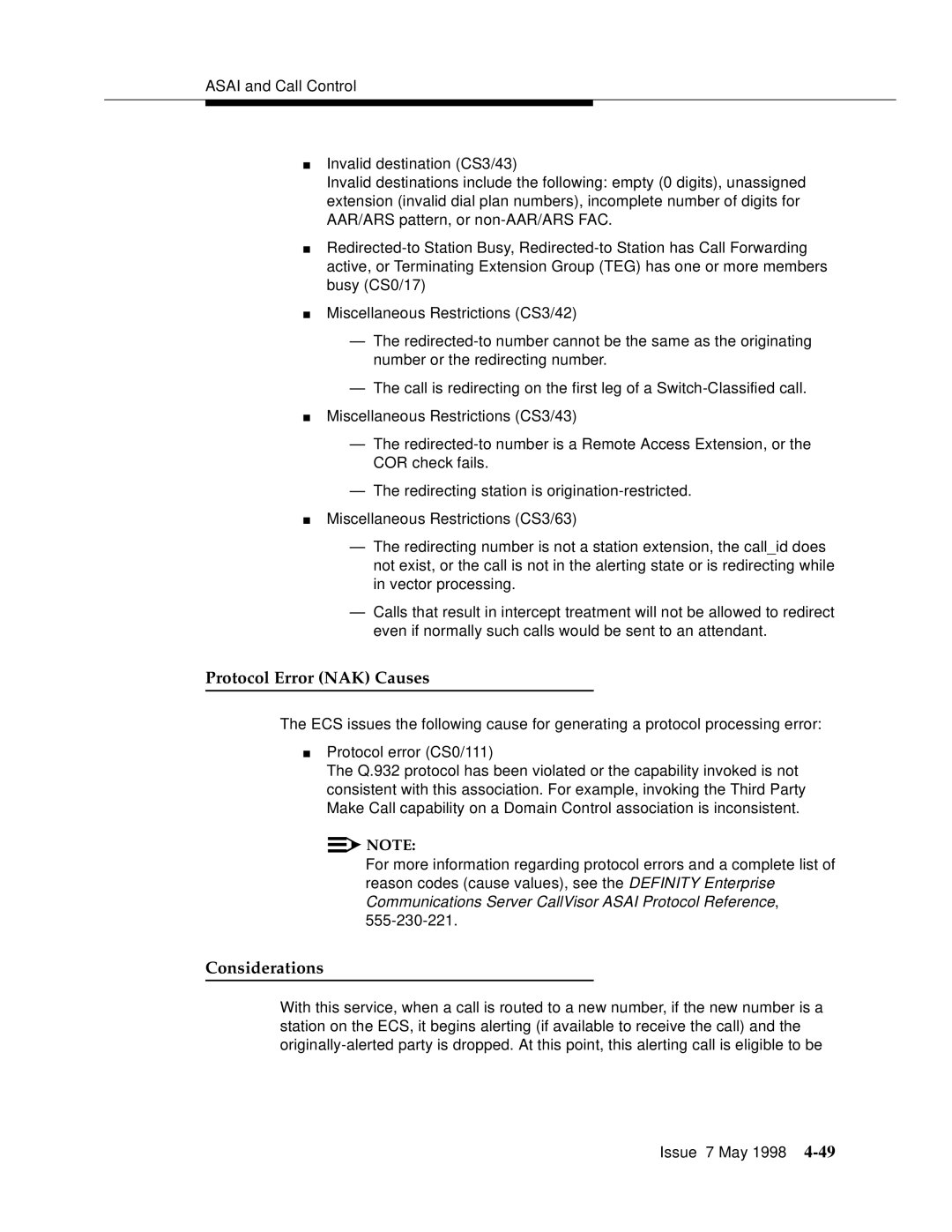
ASAI and Call Control
■Invalid destination (CS3/43)
Invalid destinations include the following: empty (0 digits), unassigned extension (invalid dial plan numbers), incomplete number of digits for AAR/ARS pattern, or
■
■Miscellaneous Restrictions (CS3/42)
—The
—The call is redirecting on the first leg of a
■Miscellaneous Restrictions (CS3/43)
—The
—The redirecting station is
■Miscellaneous Restrictions (CS3/63)
—The redirecting number is not a station extension, the call_id does not exist, or the call is not in the alerting state or is redirecting while in vector processing.
—Calls that result in intercept treatment will not be allowed to redirect even if normally such calls would be sent to an attendant.
Protocol Error (NAK) Causes
The ECS issues the following cause for generating a protocol processing error:
■Protocol error (CS0/111)
The Q.932 protocol has been violated or the capability invoked is not consistent with this association. For example, invoking the Third Party Make Call capability on a Domain Control association is inconsistent.
![]()
![]() NOTE:
NOTE:
For more information regarding protocol errors and a complete list of reason codes (cause values), see the DEFINITY Enterprise Communications Server CallVisor ASAI Protocol Reference,
Considerations
With this service, when a call is routed to a new number, if the new number is a station on the ECS, it begins alerting (if available to receive the call) and the
